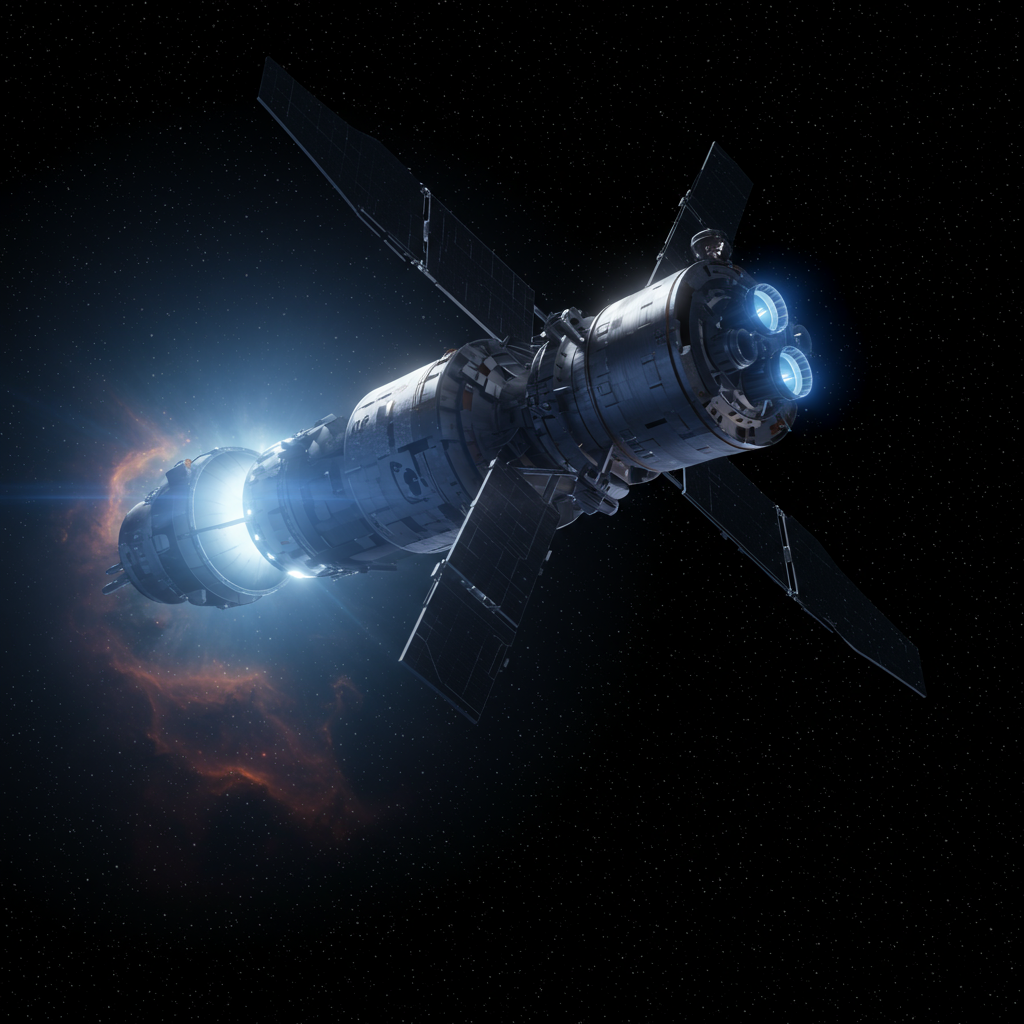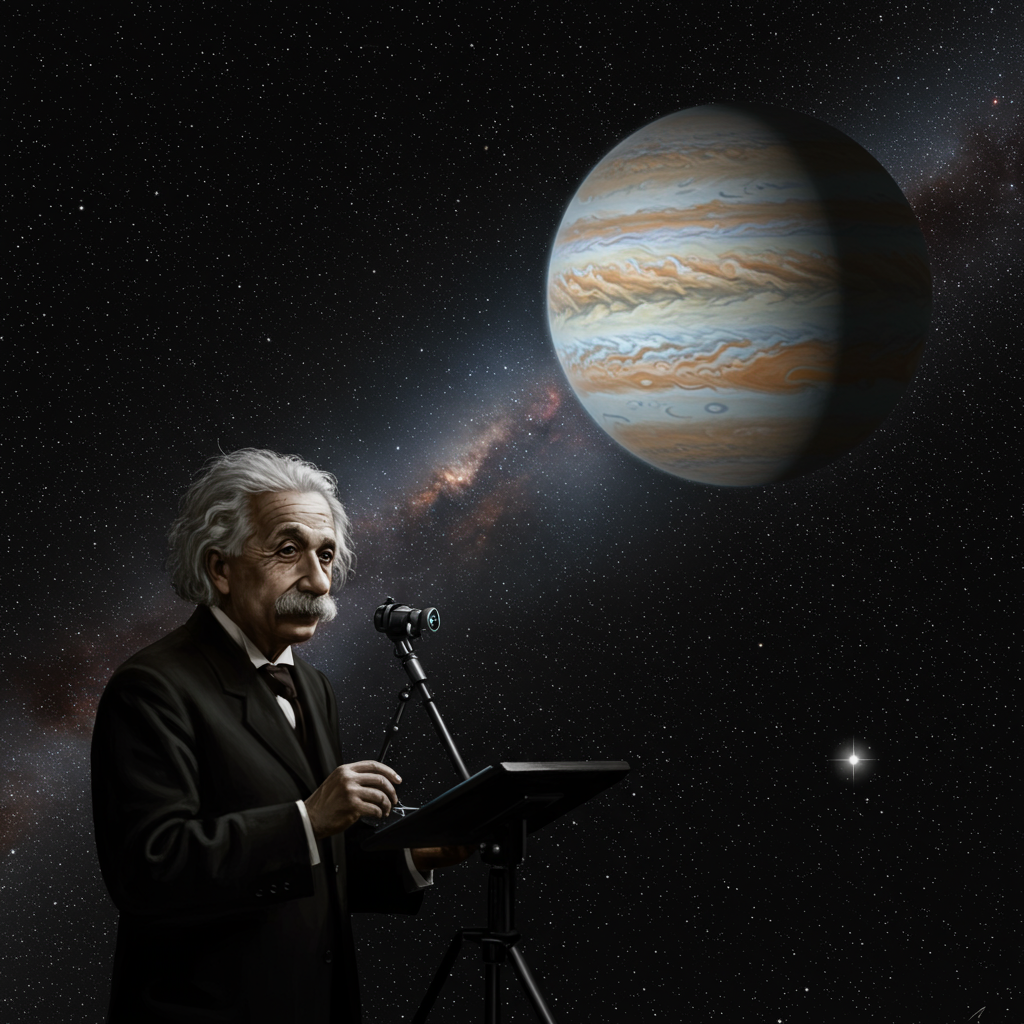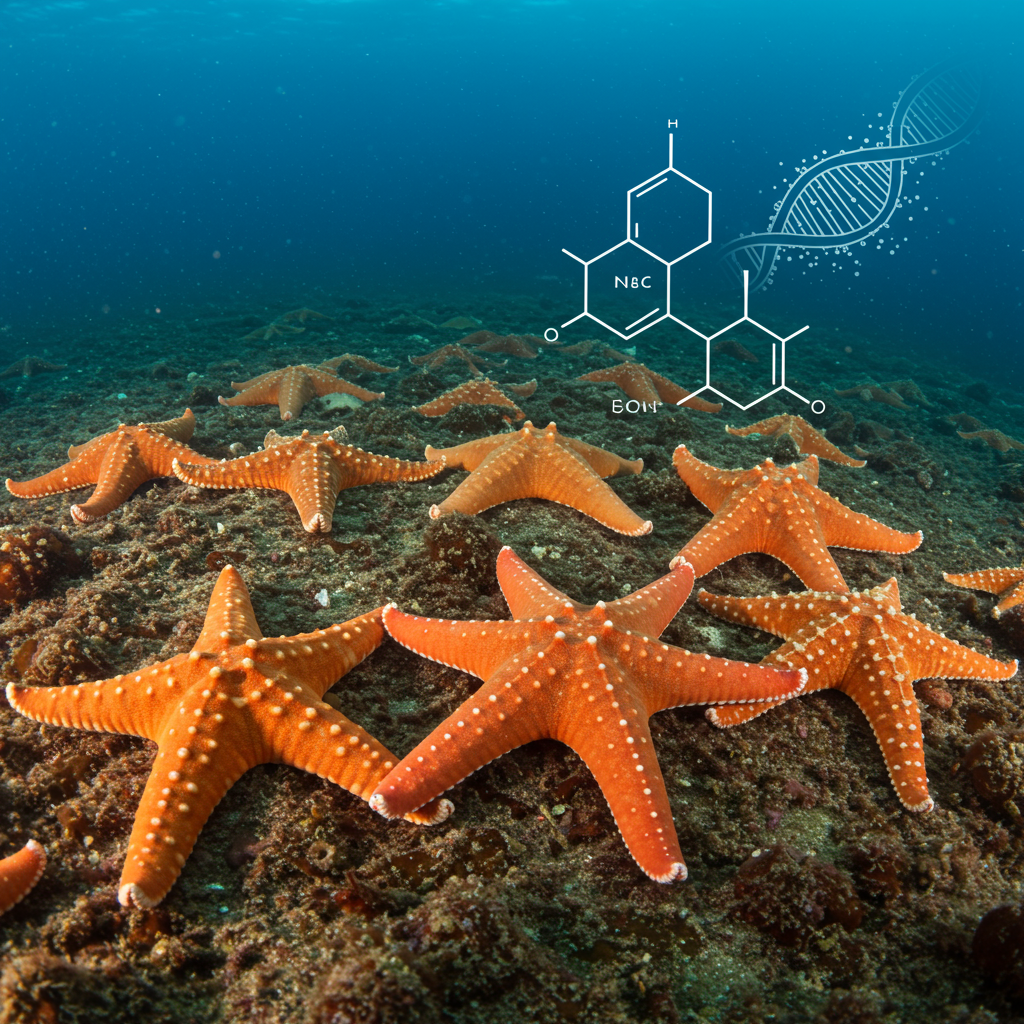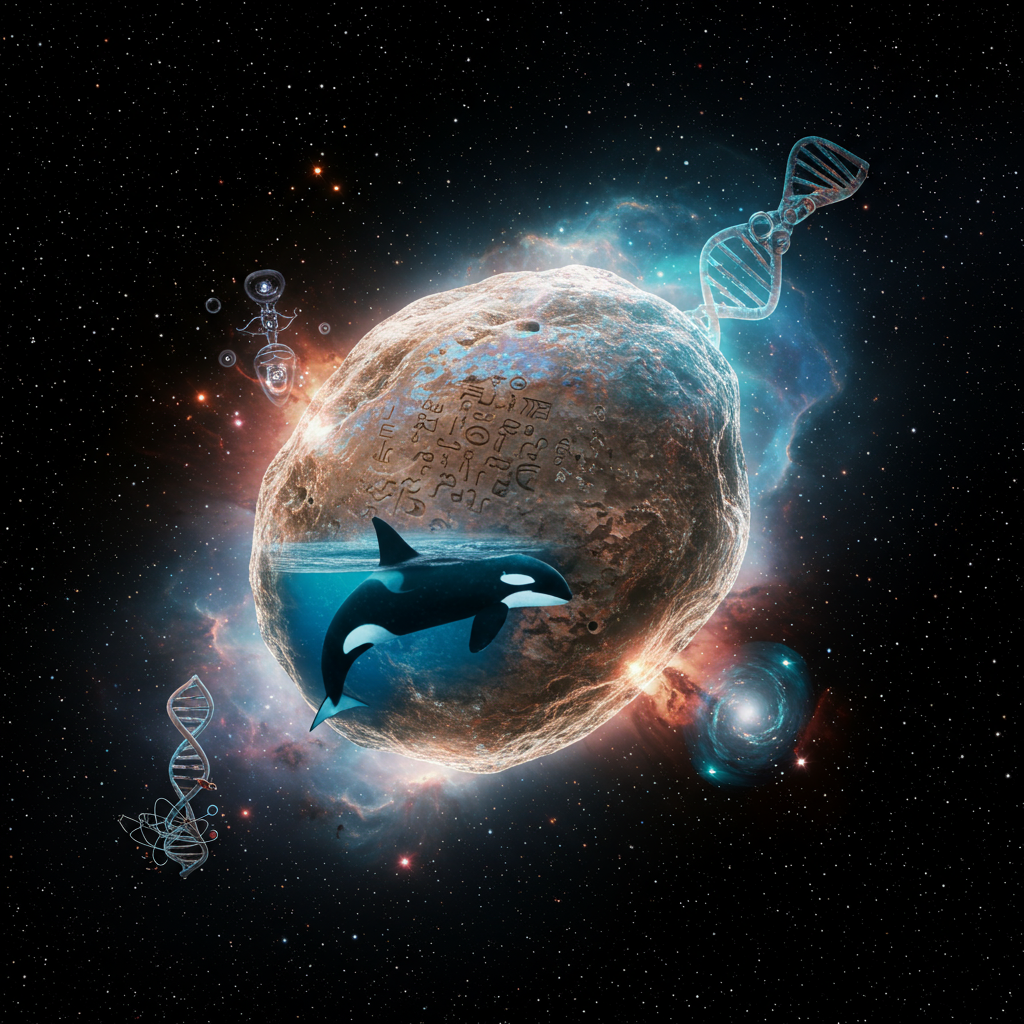For ages, humanity has looked to the stars to guide its way. Early sailors relied on celestial bodies for direction. Now, as we send probes far into the cosmos, spacecraft also traditionally use the known positions of distant stars to orient themselves and communicate with Earth. But researchers recently demonstrated that navigating the vast distances beyond our solar system might be possible using a simpler, onboard method. This pioneering test, conducted on a spacecraft already billions of kilometers away, offers a glimpse into the future of autonomous deep space travel.
The Challenge of Navigating Deep Space
Current deep space missions largely rely on NASA’s Deep Space Network (DSN). This consists of massive Earth-based radio antennas that communicate with spacecraft by sending and receiving signals. By measuring the time it takes for a signal to travel to the spacecraft and return, and analyzing changes in the signal’s frequency (the Doppler effect), ground crews can calculate the spacecraft’s position and velocity with incredible accuracy – sometimes down to mere meters for missions closer to Earth.
However, this method has limitations, especially as spacecraft travel further out. The sheer distance means signals can take minutes, hours, or even years for a round trip. Imagine controlling a probe near Pluto, almost 6 billion kilometers away; a command could take over four hours to reach it, and a response another four hours to return. This significant time delay makes real-time navigation or rapid course corrections impossible. For truly interstellar journeys, where distances are measured in light-years, Earth-based communication becomes increasingly impractical for timely navigation. Autonomous onboard systems are essential for missions venturing into the vast unknown.
Introducing Navigation by Stellar Parallax
Enter stellar parallax. This fundamental concept in astronomy describes the apparent shift in an object’s position when viewed from different locations. Hold a finger out and look at it with one eye closed, then the other. Your finger seems to jump relative to the background. The distance your finger appears to move depends on how close it is and how far apart your eyes are.
Astronomers use this principle from Earth’s orbit to measure the distances to nearby stars. By observing a star’s position from opposite sides of Earth’s orbit around the Sun (a baseline of nearly 300 million kilometers), they can measure the tiny apparent shift. The larger the shift, the closer the star. This method is how distances like the parsec (a unit based on parallax) are defined.
Using Parallax in Reverse for Navigation
The new navigation technique turns this concept around. Instead of using a known baseline (Earth’s orbit) to find an unknown distance (to a star), it uses known star positions to find an unknown location (the spacecraft’s position).
A spacecraft far from Earth has a significantly different vantage point. From this distant perspective, nearby stars will appear in slightly different positions in the sky compared to their positions seen from Earth. This observed difference, the parallax shift, depends directly on the spacecraft’s location relative to the stars and Earth.
By precisely measuring the apparent positions of several known nearby stars from the spacecraft, and comparing these measurements to the stars’ known positions from Earth’s perspective (often cataloged by missions like the European Space Agency’s Gaia observatory), researchers can triangulate the spacecraft’s precise location in three dimensions relative to those stars and the solar system. It’s essentially using nearby stars as cosmic landmarks whose apparent shift reveals the observer’s position.
New Horizons: The Perfect Testbed
NASA’s New Horizons spacecraft is uniquely positioned to test this groundbreaking method. Launched in 2006, New Horizons was the first mission to explore Pluto and its moons up close in 2015. It then journeyed deeper into the Kuiper Belt, flying by the Kuiper Belt Object Arrokoth in 2019.
New Horizons is now incredibly far from Earth – over 9 billion kilometers (more than 5.6 billion miles) away. This makes it the fifth probe ever destined to eventually exit our solar system, following the Pioneers and Voyagers. At such extreme distances, the apparent positions of even relatively nearby stars, like Proxima Centauri, are noticeably different from how we see them from Earth. This vast separation creates the necessary baseline for the parallax-based navigation technique to work effectively. The spacecraft’s distance and position make it an ideal “laboratory” for demonstrating this concept.
Details of the Pioneering Experiment
The test involved using New Horizons’ onboard imaging system to capture images of two nearby stars: Proxima Centauri and Wolf 359.
Proxima Centauri: Located just over 4 light-years away, Proxima is the closest star to our Sun and part of the Alpha Centauri system.
Wolf 359: A red dwarf located about 7.86 light-years away, also among our nearest stellar neighbors.
The team utilized images previously captured by New Horizons’ Long-Range Reconnaissance Imager (LORRI). This powerful camera, originally used for high-resolution imaging during the Pluto and Arrokoth flybys and navigation closer to the Sun, served as the “eye” for this test.
By comparing the positions of Proxima Centauri and Wolf 359 in the LORRI images to their precise locations as mapped by the European Space Agency’s Gaia observatory (which provides a highly accurate catalog of star positions from near-Earth space), the researchers were able to calculate New Horizons’ position. Lead author Tod Lauer from NOIR Lab explained that the significant shift in the apparent positions of these stars from New Horizons’ perspective, compared to the Gaia data, allowed them to pinpoint the spacecraft’s location using “NH imagery alone.”
Remarkable Results and Future Potential
The test successfully determined New Horizons’ position with an uncertainty of about 40 million kilometers (25 million miles). While this margin might seem large – roughly equivalent to finding a specific location within a sphere millions of miles wide – researchers hailed it as an “excellent result,” especially considering the immense distance and the fact that the LORRI camera was not specifically designed for this type of high-precision astrometry required for navigation.
This demonstration serves as a critical “proof of concept.” It shows that a deep-space mission can indeed use its onboard imaging capabilities to perform self-navigation among the stars. As Alan Stern, the Principal Investigator for New Horizons, noted, this method isn’t yet as accurate as the DSN for the current New Horizons mission, but its value lies in enabling future missions operating far beyond the solar system.
Scientists believe that with instruments specifically optimized for this navigation technique – featuring higher resolution and better astrometric stability than LORRI – future deep space probes could achieve significantly greater positional accuracy, potentially orders of magnitude better. Autonomous navigation capability is crucial for proposed interstellar missions that would travel for decades or centuries, where communication delays make Earth-based control impractical.
Other Navigation Approaches
It’s worth noting that stellar parallax isn’t the only method being explored for autonomous deep space navigation. Another promising technique involves using pulsars. Pulsars are rapidly spinning neutron stars that emit highly regular beams of radiation, like cosmic lighthouses. By timing the arrival of X-ray pulses from multiple pulsars, a spacecraft could determine its position, similar in concept to how GPS uses signals from satellites. NASA’s NICER/SEXTANT experiment on the International Space Station has tested the feasibility of this “pulsar navigation” or “XNAV” system.
Both parallax-based and pulsar-based navigation offer pathways towards allowing spacecraft to know where they are without constant reliance on communication with Earth. The successful New Horizons test is a significant step forward in validating one of these potential autonomous navigation methods.
Frequently Asked Questions
How exactly does stellar parallax help a distant spacecraft find its position?
Stellar parallax is the apparent shift of an object when viewed from different locations. For a distant spacecraft, nearby stars appear in slightly different positions compared to how they are seen from Earth. By taking images of these stars from its unique vantage point and comparing their apparent positions to precise star maps created from Earth’s vicinity (like the Gaia catalog), the spacecraft can use triangulation. The measured difference in the stars’ positions directly relates to the spacecraft’s location relative to Earth and the stars, allowing it to calculate its position.
Which specific stars did New Horizons image for the navigation test?
For this pioneering navigation test, the New Horizons spacecraft used its Long-Range Reconnaissance Imager (LORRI) to image two specific nearby stars: Proxima Centauri and Wolf 359. Proxima Centauri is the closest star to our solar system, located just over 4 light-years away. Wolf 359 is a red dwarf star situated about 7.86 light-years from Earth. Observing the parallax shift of these relatively close stars from New Horizons’ very distant location was key to demonstrating the navigation method.
Why are scientists developing new methods like stellar parallax for deep space navigation instead of using existing systems?
Current deep space navigation primarily relies on Earth-based tracking via the Deep Space Network (DSN). While highly accurate for missions closer to home, this method becomes problematic over vast interplanetary and interstellar distances due to significant communication time delays. For missions traveling light-years away, real-time control and navigation from Earth are impossible. Developing autonomous onboard navigation systems, like those using stellar parallax or pulsar timing, is crucial to allow future spacecraft to determine their location independently, enabling longer, more distant missions without constant communication reliance.
A Leap for Interstellar Travel
The New Horizons parallax navigation test is a quiet but profound milestone. It demonstrates that a fundamental astronomical principle, usually used to measure cosmic distances, can be repurposed to help us find our way across those same distances. While the accuracy achieved in this initial test reflects the challenges of using existing equipment at extreme range, the validation of the core concept is immense. As humanity plans increasingly ambitious missions into the far reaches of the solar system and potentially towards other stars, technologies for autonomous navigation like stellar parallax will be indispensable tools, guiding our robotic emissaries on journeys that transcend the boundaries of Earth-based control. This successful test by a spacecraft already exploring the fringes of our solar system is a vital step towards truly navigating interstellar space.




